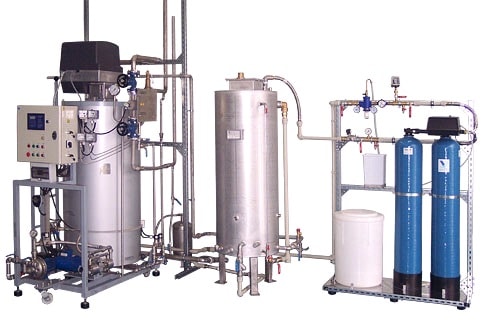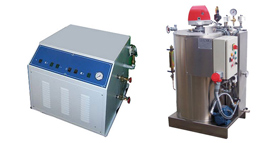STG – Steam generators
STEAM GENERATOR – a device for heating of brewhouse

 Heating brewhouse by steam generator is the traditional solution of heat transfer, has been exploited since the Industrial Revolution. Yet even today brewhouse steam heating is most often used method of heating and we meet with him in the most recent major breweries and microbreweries. We use steam heating brewhouse for most types of our microbreweries.
Heating brewhouse by steam generator is the traditional solution of heat transfer, has been exploited since the Industrial Revolution. Yet even today brewhouse steam heating is most often used method of heating and we meet with him in the most recent major breweries and microbreweries. We use steam heating brewhouse for most types of our microbreweries.
We supply two types of steam generators for our breweries
Benefits of steam heating brewhouse
- Fast heating
- Rapid heat transfer (for longer distance too)
- The rapid onset of the heating effect and its rapid clearance (low hysteresis)
- The ability to transfer large amounts of heat to be heated in the heat exchanger vessel
- Easy and precise controllability of heating effect
- The possibility of using hot steam to heat also vessels and other equipment (eg hot water tank)
- The possibility of using hot steam for rapid sanitizing pipeline routes, cooking utensils, distribution packages, etc.
Disadvantages of the steam heating brewhouse
- High cost of steam generator
- Costly production brewhouse and other heated vessels – pressure distribution
- The need for manufacturing and operating steam pressure tests, jacketed vessels and steam distribution – higher acquisition and operating costs
- Necessity of flue gas installation and inspection of gas-fired steam generators
- The need to ensure a reserved room (boiler room) for gas steam generator with more power
- High demands to ensure safe operation – danger of steam when performed incorrectly instructions
Water treatment plant for steam generator
Note: (for gas generators it must be counted separately, for electrical generators the water treatment plant is included). The water treatment plant consists of a fiberglass bottles, filled with ion-exchange material and plastic containers (brine tank) serving as the salt container for regeneration. These components form a compact unit together with automatically controlled head which is mounted on top of the fiberglass bottle. The upper part of the brine tank has a lid which serves for replenishment of salt to brine tank. Automatic electronically controlled head measures the amount of treated water and starts regeneration as needed. It is possible to select a sanitary regeneration, which ensures regeneration of ion exchange resin during outages of operation (protection of ion exchange resin during long use).
